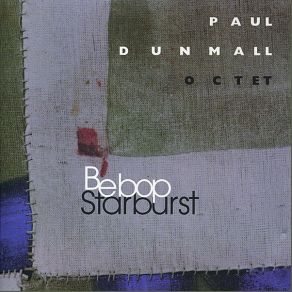Bebop Starburst
Download links and information about Bebop Starburst by Paul Dunmall Octet. This album was released in 1999 and it belongs to Jazz, Alternative, Classical genres. It contains 5 tracks with total duration of 52:38 minutes.

|
|
|---|---|
| Artist: | Paul Dunmall Octet |
| Release date: | 1999 |
| Genre: | Jazz, Alternative, Classical |
| Tracks: | 5 |
| Duration: | 52:38 |
| Buy it NOW at: | |
| Buy on iTunes $9.99 | |
| Buy on Amazon $8.99 | |
| Buy on iTunes $9.99 | |
Tracks
[Edit]| No. | Title | Length |
|---|---|---|
| 1. | Part I | 0:50 |
| 2. | Part II | 7:25 |
| 3. | Part III | 20:34 |
| 4. | Part IV | 21:12 |
| 5. | Part V | 2:37 |
Details
[Edit]Saxophone player Paul Dunmall is mostly known for his work with the free jazz quartet Mujician. But since 1997 he has been leading his own octet. Bebop Starburst is this band's second CD. The octet is formed of the four members of Mujician (Dunmall, Tony Levin on drums, Paul Rogers on bass, Keith Tippett on piano), plus Simon Picard on tenor sax, Annie Whitehead and Chris Bridges on trombones and Gethin Liddington on trumpet.
An impressive brass section like this (two saxes, two trombones, one trumpet) was screaming for a 1940s jazz-oriented music. Incidentally, this record offers free jazz flirting with bebop and swing. Did the American swing revival of the mid-'90s (thanks to the Squirrel Nut Zippers, the Brian Setzer Orchestra et al) gained the avant-garde scene? One thing sure, Cuneiform Records simultaneously released two CDs in this vein (the other one being Motor Totemist Guild's City of Mirrors). On Bebop Starburst, the listener is treated with a five-part program. Part one, is the argument exposed in 50 seconds. It instantly sets the pace of this CD with a burst of brass and a running bebop rhythm. Part two (seven minutes) picks up on the first statement and maintains the pace only to find a calmer mood in the end. Part three (20 minutes) opens on a prepared piano solo by Keith Tippett, soon joined by his three Mujician acolytes. If it weren't for the occasional brass lines, this would feel like a typical Mujician performance. Not for long, though: things go crazy once more, including ripping solos by Dunmall and Picard. Part four (another 20 minutes) starts in 3/4 as a slow jazz number and gradually escalate to a climactic frenzy and catharsis. Part five (3 minutes) is a typical big band ballad.
Bebop Starburst is all composed material with some space for free improvisation (especially in part three). The mood is festive, the party is on and you might catch yourself foot-tapping or even making a couple of dance steps. A surprising blend of old- and new-school jazz. ~ François Couture, Rovi